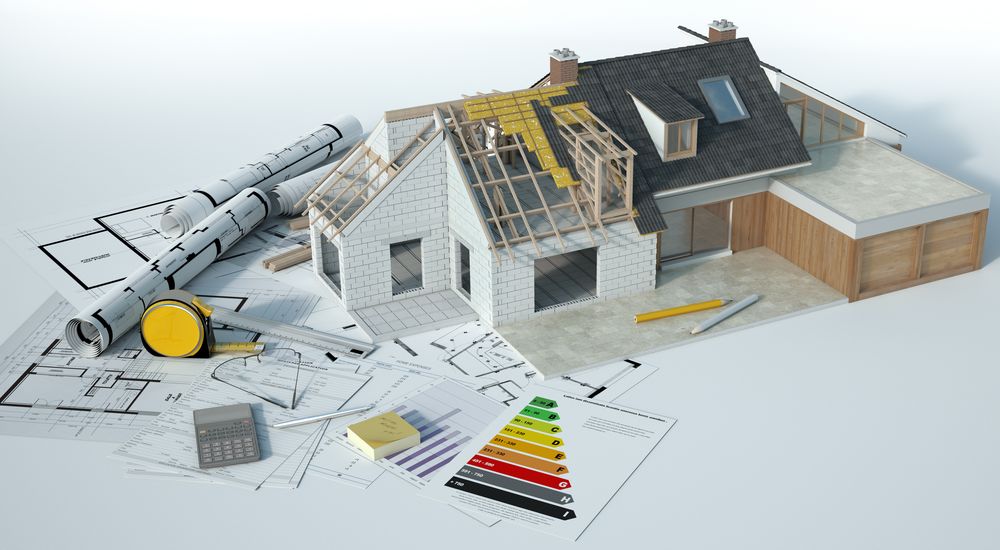5 Powers of BIM that can change the face of a Renovation Project
5 Powers of BIM that can change the face of a Renovation Project

5 Powers of BIM that can change the face of a Renovation Project
Building Information Modelling (BIM) is a powerful tool which can usher AEC industry into the next wave of growth. Construction professionals across the world have experienced BIM’s 3D visualization and simulation ability to map the entire construction lifecycle right from the design phase through the project completion and post-construction asset management. Its benefits also include cost savings over mid to long term, faster completion, better project co-ordination and lesser wastage of materials for any project. BIM Adoption has been on a steady rise for new construction projects. However, construction professionals need to tap more into BIM’s capabilities for reconstruction and renovation.
Building renovation or refurbishment projects could throw in more complexities than new construction. In many cases, 2D CAD drawings of the existing building may not be available and the drawings on paper are the only source of information about the existing building. This lack of information about the existing building can contribute to inadequate design, which could further lead to multiple changes during the construction and wastage of time, effort and resources.
BIM can add immense value to renovation and retrofitting projects. It can help in improving the inhabitants’ lives and make the asset more energy-efficient and sustainable. For a renovation and refurbishment project, laser scanning can be used to create a comprehensive 3D BIM model that offers data on construction materials, costs, and manufacturer information. Such as-built information facilitates optimum utilization of resources during construction, better workflow management, and asset management throughout the asset lifecycle.
Let us look at the 5 BIM aspects that reliably support successful building renovation and refurbishment projects.
1 - Point Cloud and Laser Scanning
Point Cloud to BIM or Scan to BIM services can be used for creating an accurate model for refurbishment and renovation projects. In this process, the 3D laser is used to survey the building. This technology eliminates errors that occur through traditional measurement tools and practices.
2 - Point Cloud to 3D Model
The asset data from Point Cloud is processed through software to build a 3D model. This step is called Point Cloud to 3D model. The building geometry captured in this 3D model gives thorough information about floor plans, elevations, and other sections of the buildings. The information storehouse eases out renovation planning, design and construction.
3 - Scan to construction drawings
An as-built BIM model can be created with the help of scan to construction drawings. These drawings identify the problems in the building design. The early clash detection enables architects and other project stakeholders to identify possible errors in the planning stage itself. This, in turn, saves time, money, and natural resources due to construction rework.
4 - Asset management
The parametric data available from Point Cloud to 3D model is a rich and accurate view of the building asset. This information allows architects, engineers, and designers to plan and modify building systems including electricity, HVAC and plumbing. The data storehouse also helps manage the building utilities and chart out preventive maintenance.
The information management gets seamless whenever we linked database asset Management and BIM together. Asset’s location gets simpler because BIM renders itself for creation of digital twins as well as providing real time information across asses categories. In addition, BIM operates as an information storehouse for asset data which also include asset history, operations, size, disaster recovery and dependencies which in turn support supports better planning of repair, maintenance and reduce big time which waste in maintaining the assets.
Through the BIM model the problem in AC and duct can be easily identified. Which in turn helps the maintenance staff to fix problem in few hours in a one go rather that multiple times like with traditional asset management.
The 3D model can help identify point and linear assets in the building structure. The asset data also provides information about interconnected point assets and linear assets. For example, point assets such as faucet, basin, sprinkler linked with the linear assets such as water supply, drainage pipes, and others.
5 - 3D collaborative model
The greatest advantage of BIM Services is information transparency. The 3D model can be shared with all project collaborators. Changes at any construction phase are updated in real-time and are accessible to all stakeholders through the model. This helps eliminate any room for miscommunication or conflicts. The streamlined workflow, seamless communication among project members, and better conflict resolution ensure fast and successful completion of the renovation project.
If a nation envisions robust and sustainable infrastructure, then retrofitting and renovating existing buildings must be a part of the mission. By leveraging technologies like the Point Cloud to BIM Services , it is possible to create sustainable infrastructure at scale. Adopting BIM is the natural precursor for large scale public infrastructure upgradation and innovation.
Source: https://excelize.com/blog/bim-an-effective-tool-for-renovation-projects












